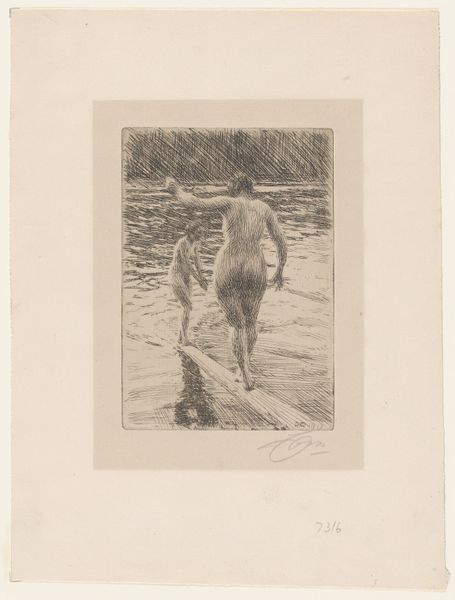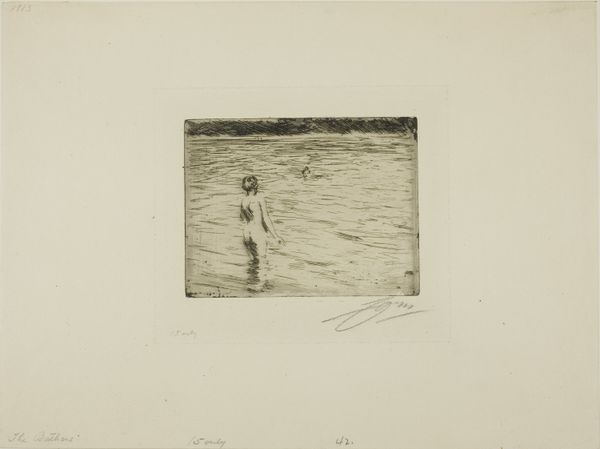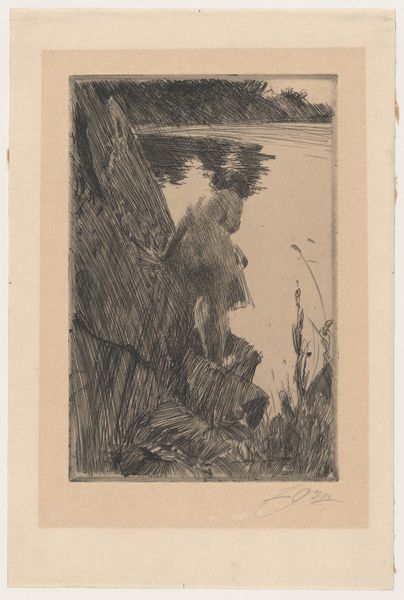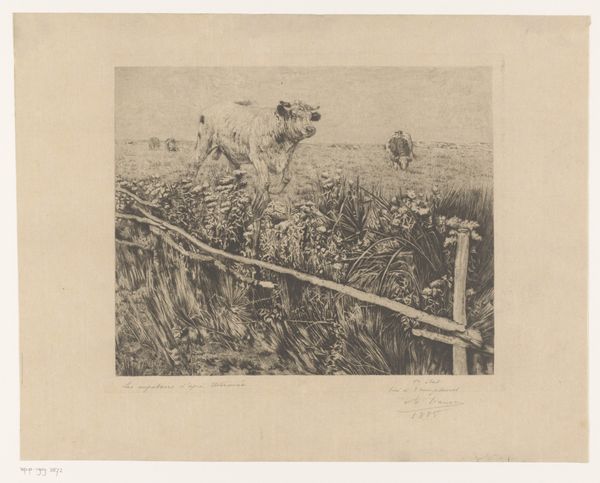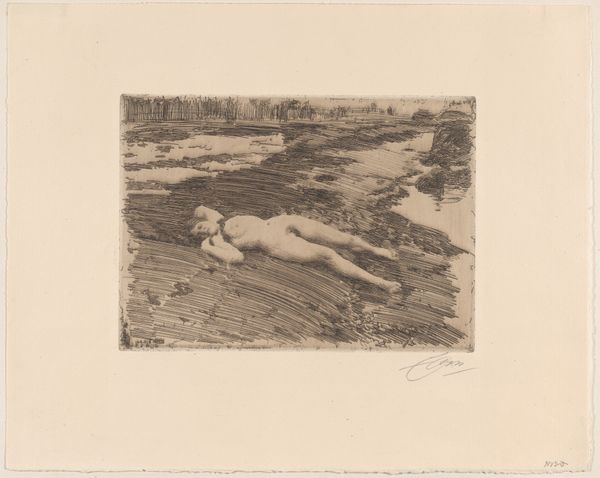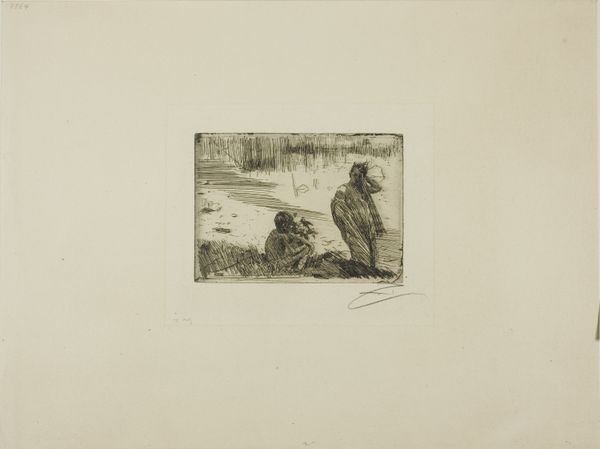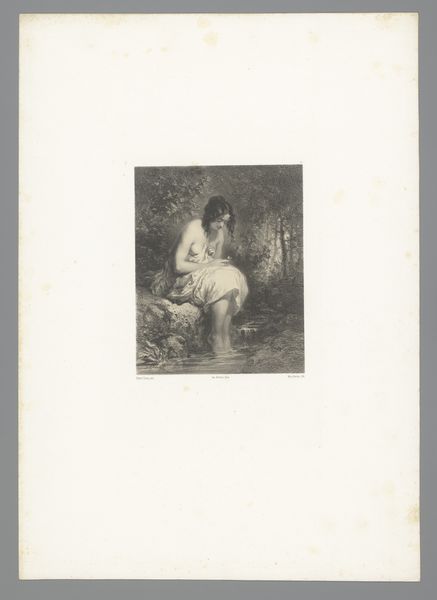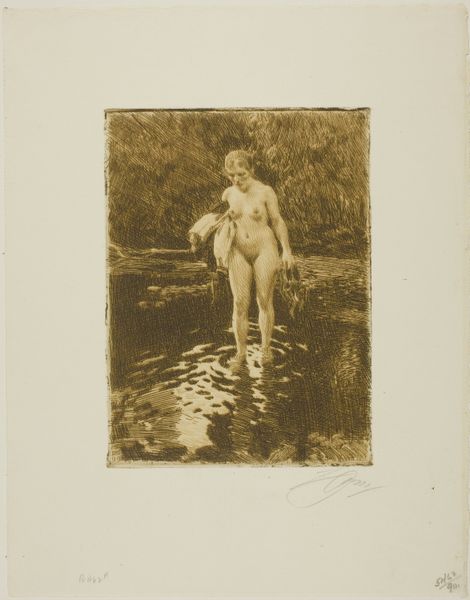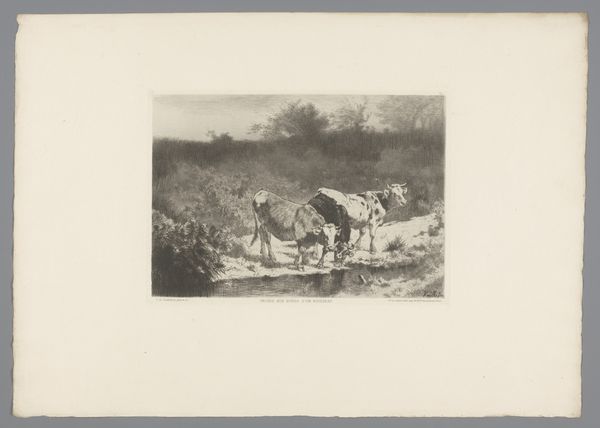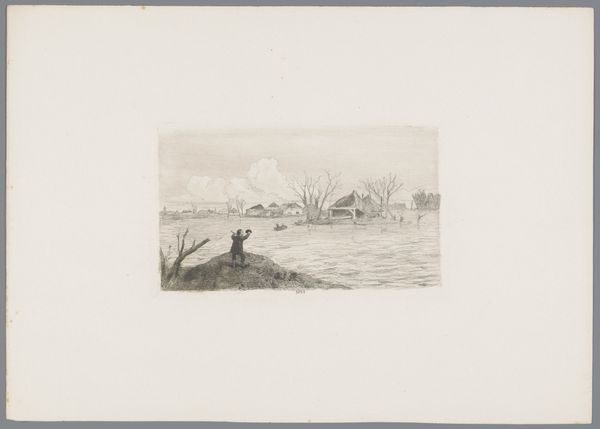
Dimensions: 244 × 194 mm (image); 249 × 198 mm (plate); 439 × 340 mm (sheet- folded)
Copyright: Public Domain
Curator: Anders Zorn’s etching, "The Fence," from 1913. It's currently held here at The Art Institute of Chicago. Editor: First thought? Feels very intimate, a private moment almost accidentally witnessed. The texture, even in reproduction, gives the water this shimmering, living quality. Curator: Zorn was a master of the etching technique, wasn't he? Notice how he uses line weight and density to create depth. He carefully manipulates the surface of the copper plate with acid to achieve these effects. It looks effortlessly spontaneous, but the process would be quite involved and deliberate. Editor: It’s funny how something so controlled in its creation can evoke such a raw feeling. The water reflects everything, and the figure... she seems so unconcerned, almost part of the landscape. I imagine she’s quite enjoying the moment. Curator: Interesting. This particular subject matter relates to a broader artistic preoccupation at the time. Etchings became a popular means of producing and disseminating art. These were more accessible art objects—a commodity enjoyed by a wider audience, not only by an elite. Editor: A democratic nude! There's something inherently radical in presenting such everyday intimacy outside of idealized conventions, isn't there? I'm fascinated by the construction of the fence itself, almost as much as the woman and water. What’s the symbolic load of that rough barrier? Curator: One might see it as a metaphor for boundaries, or even access—restrictions between private and public space, between the artist and his model. This specific image resonates because it engages with prevailing ideas about realism and impressionism while subtly questioning prevailing social constructs, and ideas of propriety. Editor: I'm left wondering about the embodied feeling in this place...the temperature of the water, the slight breeze. Zorn captures it. It leaves me oddly serene, actually. Curator: Considering the means of its creation, I find my reaction slightly surprising, too. A powerful illustration of materiality shaping—and sometimes contradicting—perception.
Comments
No comments
Be the first to comment and join the conversation on the ultimate creative platform.
